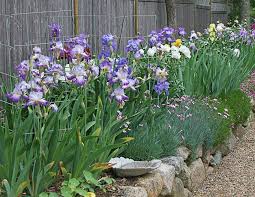
A mass of Irises
Mid to late May sees the arrival of he elegant and delicate flowers of the bread irises, whether the tall Flag at 75cm to 1.20m or the dwarf bearded for rockery at 20cm, the colour combinations and varieties are endless and I defy anyone not to fall head over heels in love with them. As a devoted self confessed Iris fan here are some of my favourites.
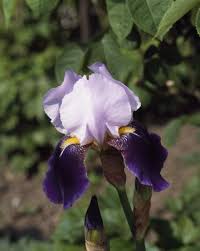
I. ‘Braithwaite’
Iris ‘Braithwaite’ this is a classic tall breaded Iris, with hansom wide glaucous grey leaves standing at 60cm high and flower stems up to 90cm. It has striking soft lavender standards ( the upright petals) and deep velvety falls with a splash of orange stamens. Flowers mid to late May.
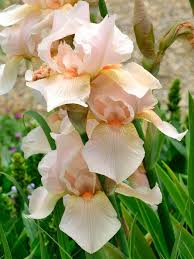
I. ‘Edward of Windsor’
Iris Edward of Windsor:fans of grey leaves up to 5ocm tall and flower stems to 90cm. A rich caramel pink with orange throat, a good addition to any mixed planting. Flowering late may early June
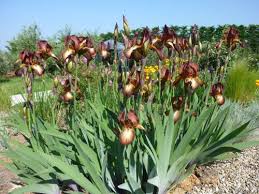
I’Kent Pride’
Iris Kent Pride: this is a stunning tall bread Iris with silvery swords of foliage up to 70cm tall, late may the most striking flowers appear, a deep chestnut with splashes of white and some white veining and a bright yellow blaze, a stunner in a collective Iris bed. Mid to late may.
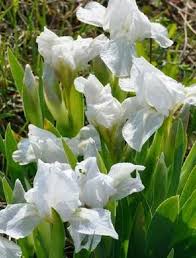
I. ‘Lilli-White’
Iris ‘lilli- white’: this is a striking dwarf bearded Iris with leaves up to about 20cm and 30cm flower stems with delicate white papery flowers. Flowering late April early may.
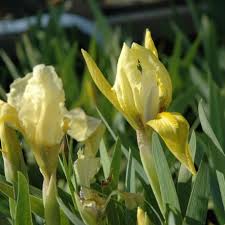
I. ‘Amber Queen’
Iris Amber Queen: Grey foliage up to 15/20cm and flower stems up to 20cm. Elegant primrose yellow flowers. Flowering April to May.
Iris ‘Cherry Garden’: grey foliage with flower stems just held above at 25cm, Flowering mid April to early may. Light violet coloured flowers.
All beard Iris, need well drainage soil and will grow well in gritty mediums and even on the edge of gravel areas, They like a hot sunny position and the rhymes do best when lying near to surface ‘To bake’ They are easy to care for, needing little to nothing in the way of maintenance,their main predator is the deadly slug/snail, so a hot sunny spot in gravelly soil should help keep them at bay.
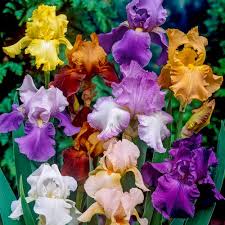
A riot of colours.
When the clumps become large with central areas of woody rhizomes and only leaves towards the outer edges and flowering is starting to decrease, this is the time to divide them. Division is done after flowering in late July to the early September. Use a fork and lift the clumps. Using a sharp knife cut away the woody old sections of rhizomes, cut into sections with healthy rhizomes and a good cluster of roots. Cut the leaf growth back by 2/3rds. Plant in new positions. in shallow pits with a free draining gritty compost. Or pots to grow on before transplanting.
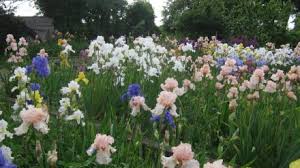
Iris in all their glory
Some say the bearded Iris is to fleeting and the slugs and snails too much of a problem, I would counter that some of the best things in life are here for but a short moment and therefore even more enjoyable for it. I hope I have inspired you to get started on your own Iris collection.
